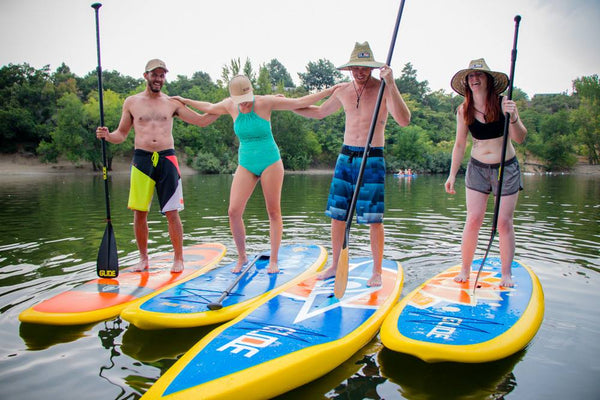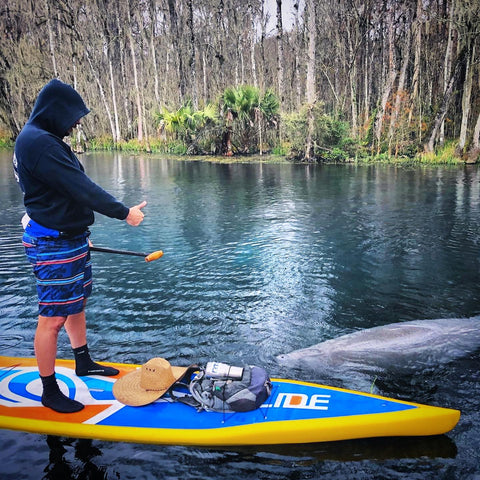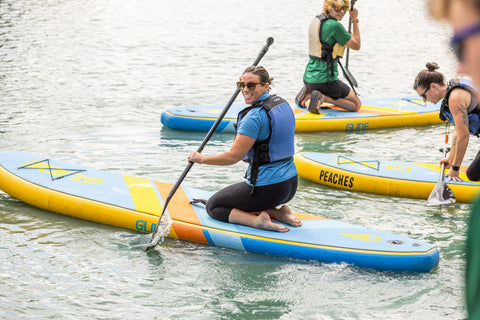
How to Move Around on a Paddle Board: A Guide to Mastering Mobility
While standing and paddling are fundamental skills, knowing how to move around on your paddle board can significantly enhance your experience. Whether you're adjusting your stance, maneuvering for a wave, or simply enjoying a different perspective, mastering mobility on your board is key.
Introduction

Paddle boarding is an exhilarating way to explore the water, offering a blend of relaxation and physical activity. While standing and paddling are fundamental skills, knowing how to move around on your paddle board can significantly enhance your experience. Whether you're adjusting your stance, maneuvering for a wave, or simply enjoying a different perspective, mastering mobility on your board is key. Here’s a guide to help you move around like a pro on your paddle board.
Finding Your Balance

Before you start moving around, it's crucial to feel comfortable and stable on your paddle board. Begin by standing in the center of the board with your feet hip-width apart and knees slightly bent. Keep your gaze on the horizon to maintain balance. Once you feel stable, you're ready to start moving.
Walking on Your Paddle Board
The Basic Steps
Walking on a paddle board might seem challenging at first, but with practice, it becomes second nature. Here's how to do it:
- Shift Your Weight: Start by shifting your weight to one foot. Keep your movements smooth and controlled to avoid rocking the board.
- Take Small Steps: Move the other foot forward, placing it gently on the board. Take small steps to maintain balance.
- Use Your Paddle: For extra stability, use your paddle as a third point of contact. Place it in the water on the opposite side of your leading foot to help steady yourself.
Practice walking forward and backward on calm water until you feel confident.
Changing Directions

The Pivot Turn
The pivot turn is a handy maneuver for quickly changing directions. Here’s how to perform it:
- Step Back: Shift your weight to your back foot and step back towards the tail of the board. This will lift the nose slightly out of the water.
- Sweep Stroke: Use a wide sweep stroke with your paddle to turn the board. The combination of your weight shift and the paddle stroke will rotate the board around its tail.
- Return to Center: Once you’ve turned, step forward to the center of the board to stabilize it.
Practice this move in both directions to become proficient at turning quickly.
Sitting and Kneeling

Sometimes, sitting or kneeling on your paddle board can offer a break from standing and provide a different perspective.
How to Kneel
- Lower Yourself Slowly: From a standing position, slowly lower yourself onto your knees. Keep your paddle across the board for balance.
- Center Your Weight: Once kneeling, center your weight to maintain stability. Your knees should be about shoulder-width apart.
Kneeling can be particularly useful in choppy water or when you need more stability.
How to Sit
- Transition from Kneeling: From a kneeling position, sit back on your heels and then move your legs to one side.
- Find a Comfortable Position: Sit cross-legged or with your legs extended, whichever feels more stable for you.
Sitting can be a relaxing way to paddle, especially if you’re out on the water for an extended period.
Moving Around for Surfing

If you’re interested in paddle board surfing, mobility becomes even more critical. Here’s how to position yourself to catch waves:
- Surf Stance: Move one foot back towards the tail and the other towards the center, adopting a staggered stance. This stance gives you better control and stability.
- Adjust for Balance: Shift your weight forward or backward depending on the wave. Leaning forward helps you catch the wave, while leaning back helps you stay on it.
- Practice Popping Up: Just like in traditional surfing, practice popping up from a prone position to a surf stance to improve your reaction time and balance.
Tips for Better Mobility
- Stay Relaxed: Tension can make balancing more difficult. Stay relaxed and keep your movements fluid.
- Practice Regularly: The more you practice moving around on your board, the more confident you’ll become. Try different maneuvers in calm conditions before attempting them in rougher waters.
- Use Your Paddle: Your paddle is an excellent tool for maintaining balance and stability. Use it to steady yourself as you move around the board.
Conclusion

Mastering mobility on your paddle board opens up a world of possibilities, from navigating tight spots to enhancing your surfing skills. By practicing these techniques, you’ll become more confident and agile on the water, making your paddle boarding experience even more enjoyable. So, next time you’re out on the water, take a moment to practice moving around on your board. You'll be surprised at how much it enhances your overall experience.


